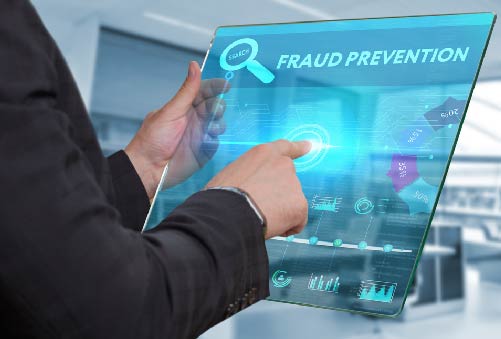BAI PODCAST: Bank Collaboration and Diverse Fraud Tools are Keys to Prevention
- Fraud remains a growing threat
- Offenders are low-impact/high frequency, or high impact/low frequency - which do you concentrate on?
- When it comes to fraud prevention, cooperation and teamwork trump competition
BAI welcomed Andy Shank, vice president of fraud and risk product management at Vericast, to discuss via their BAI Banking Strategies podcast how banks and credit unions can better protect customers from the growing threats of Identity fraud, account takeover, and phishing attempts -- all of which have seen increases in 2021.
Two "Buckets"
Shank describes fraud as consisting of basically two "buckets":
- The low impact, high-frequency bucket consists of card fraud, check fraud -- the "meat and potatoes."
- The high-impact, low frequency bucket is wire transfers, people calling in to harvest account information, "romance fraud," overseas "relative in distress," etc.

He goes on to posit that FI's tend to concentrate on the day-to-day low impact, high-frequency fraud cases, but probably should focus more on the less frequent "big stuff."
A good deal of his time and effort are expended to make the case to the C-suite for investments in fraud prevention technology that will see a net payback in terms of lowering fraud losses. "That is my battle these days," Shank admits.
Digital Banking and Spotting Suspicious Activity
Even when watching the activity on a screen in real time, Shank admits "it is very difficult to decide what is good and what is bad. The second I declare somethings a fraud it ends up being a family in a road trip, and they were crossing state lines and making transactions everywhere. The second I think it's a family on a road trip or a traveling businessman, it ends up being a fraud scheme. It is very difficult for banking personnel to decode what everyone's activities are."

Digital banking has made transactions "darn near instantaneous," and with more speed comes more fraud. Shank foresees a day when we may have to set limits. At the same time, "We have to evolve as quickly as the bad guys evolve."
"Figure out what the unique characteristic is of your fraud, and really focus on that. Devise processes that are unique to your circumstance, put that technology to use, and you'll find a dip in your fraud."
Shank also proposes an interesting argument when it comes to the responsibility of fraud. He notes a few key examples:
- If a consumer clicks on a phishing email, or provides the fraudster with their banking information/credentials, should the consumer bear responsibility?
- Should companies like Google, who provide free email services that fraudsters utilize, bear some of the responsibility? With their unlimited resources, they should be capable of spotting irregular or suspicious activity from fraudsters.
We have advocated in previous blog posts continuing to provide your customers with information to stay aware of past and current scams, but Shank also proposes an interesting concept for how technology companies like Google can prevent fraud.
Invest in Prevention & Collaboration
His long experience compels Shank to advise FI's to fund customer protection and do as much as possible to strengthen their anti-fraud systems. We have noted that avoiding investments in fraud tools may create short-term savings now, but cost more later.
Also, taking on fraud alone may not be the right path.
Shank also advises that, in the arena of fraud detection and prevention, we should forget about competing and think about collaborating. "Throw competition out the door when it comes to fraud," he says. "Get involved in working groups in your area. Link up with fellow BSA officers and compliance experts from neighboring institutions."
The same strategy should be observed when investing in fraud solutions. There is not a stand-alone fraud tool that can detect all cases of fraud. Rather, banks need to invest in multiple technologies that work cooperatively to provide a broad range of protection.

This is certainly the case for check fraud, which still plagues banks and their customers. Banks need to blend transactional analytic technologies to analyze the trends of activity in accounts with an image-analysis solution that utilizes forensic AI technologies, interrogating the images of check to detect counterfeits, forgeries, and alterations. This combination provides a much larger scope of fraud detection and prevention for both the banks and their customers.